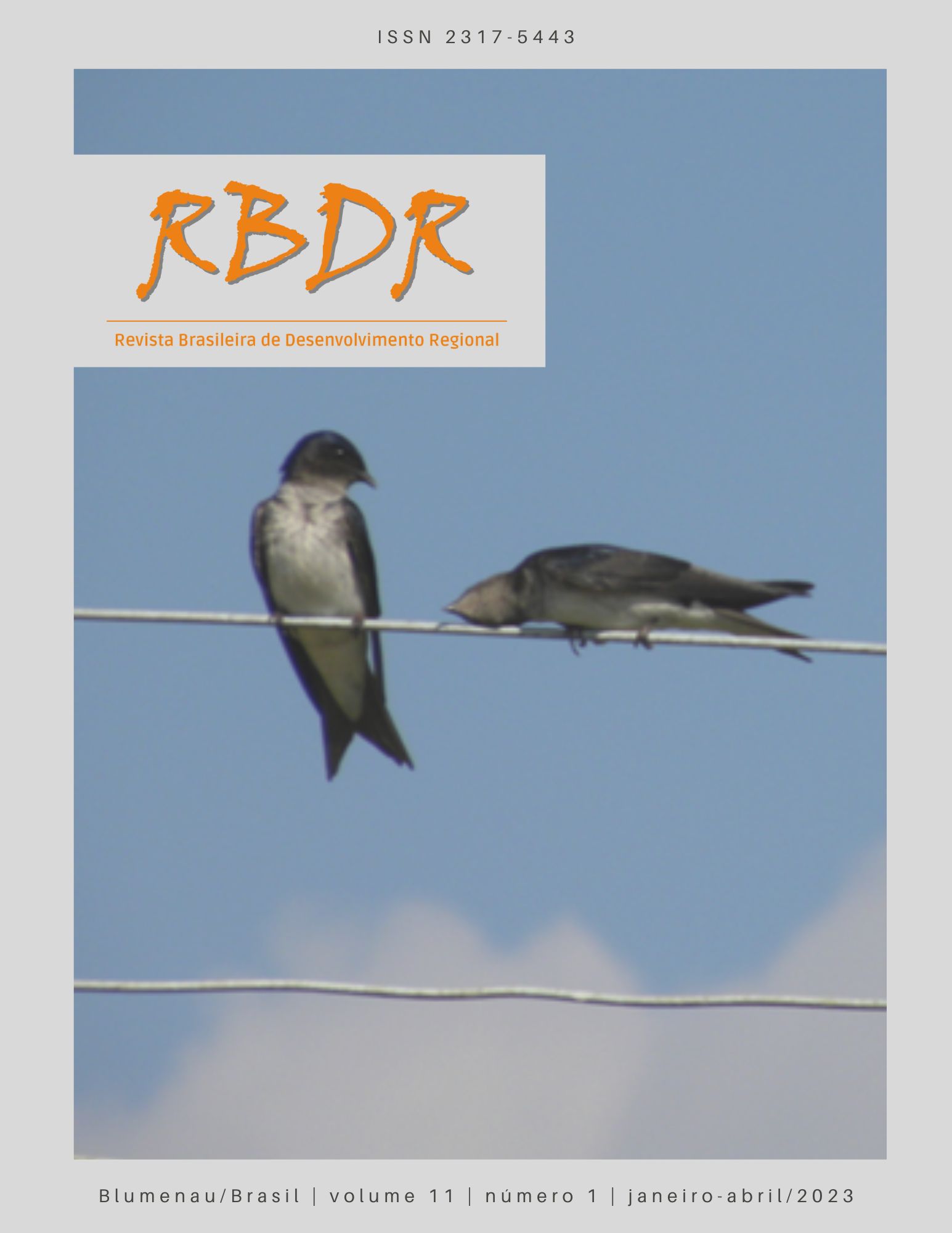Crecimiento y desarrollo socioeconómico en las Regiones Geográficas Intermedias de Brasil
DOI:
https://doi.org/10.7867/2317-5443.2023v11n1p25-51Resumen
El objetivo de este artículo es analizar el comportamiento del crecimiento y desarrollo socioeconómico en las Regiones Geográficas Intermedias (RGI) de Brasil. El procedimiento metodológico consistió en estimar el coeficiente de convergencia, teniendo como parámetros el Producto Interno Bruto (PIB) per cápita de los sectores primario, secundario y terciario, y el Índice FIRJAN de Desarrollo Municipal. El período de análisis fue entre los años 2005 y 2017. Los resultados mostraron una mayor convergencia del crecimiento en el sector primario entre las RGI de Brasil. El sector terciario fue el que mostró las mayores disparidades regionales. En términos de desarrollo socioeconómico, se observó una convergencia para los aspectos de Educación, Salud e Ingresos y Empleo. El análisis mostró una convergencia de los patrones de desarrollo socioeconómico y una mayor divergencia en los aspectos económicos. Sin embargo, ambas dimensiones deben producir más asimetrías a largo plazo para el mantenimiento del ritmo de crecimiento y desarrollo económico regional en Brasil.
Descargas
Descargas
Publicado
Cómo citar
Número
Sección
Licencia
Os direitos autorais para textos publicados na Revista Brasileira de Desenvolvimento Regional são do(a) autor(a) e co-autor(a/es), com direitos de primeira publicação para a revista. Por aparecerem neste periódico de acesso público, os textos são de uso gratuito, com atribuições próprias, em aplicações educacionais e não-comerciais. A RBDR permitirá o uso dos textos publicados para fins não-comerciais, incluindo o direito de envio para bases de dados de acesso público. Os textos publicados são de integral e exclusiva responsabilidade do(a) autor(a) e co-autor(a/es).
• O(a) autor(a) e co-autor(a/es) autoriza(m) a publicação do texto na revista;
• O(a) autor(a) e co-autor(a/es) garante(m) que a contribuição é original e inédita, e que ela não se encontra em avaliação em outra(s) revista(s);
• A revista não se responsabiliza pelas opiniões, ideias e conceitos emitidos nos textos, por serem de inteira responsabilidade do(a) autor(a) e co-autor(a/es);
• É reservado aos editores o direito de promover ajustes textuais e de adequação do texto às normas de publicação;
• O(a) autor(a) e co-autor(a/es) declaram que o texto não é objeto de quaisquer conflitos de interesse.





